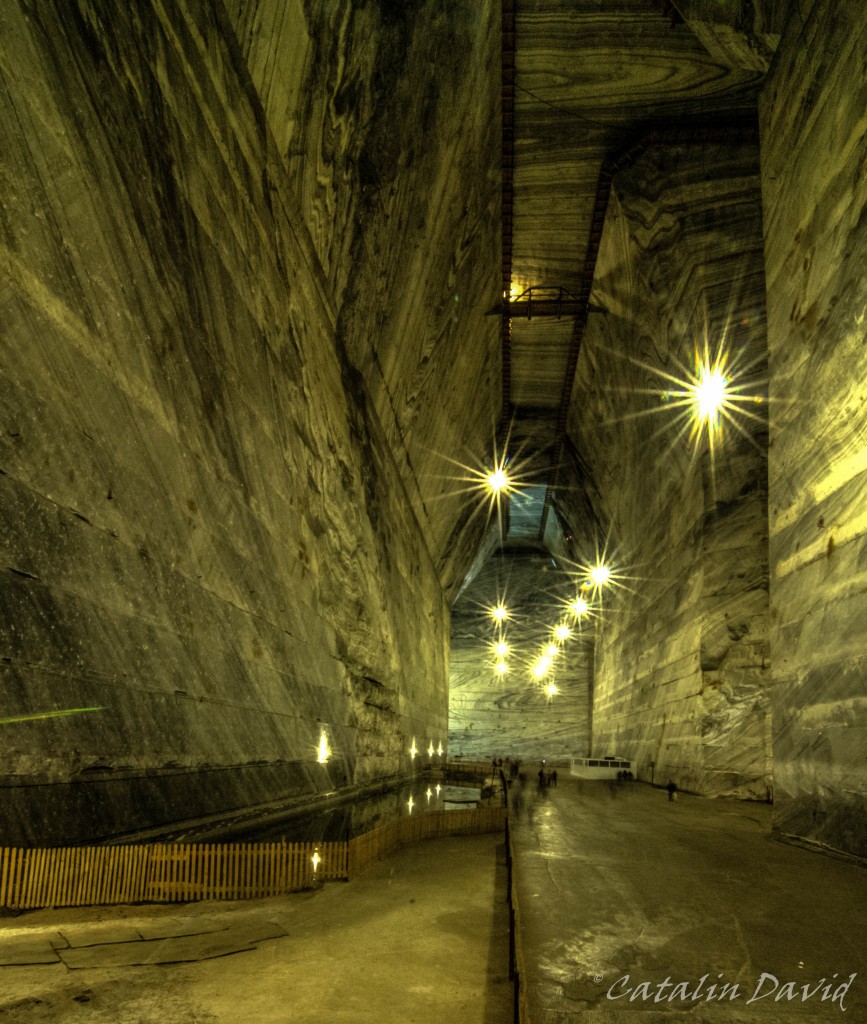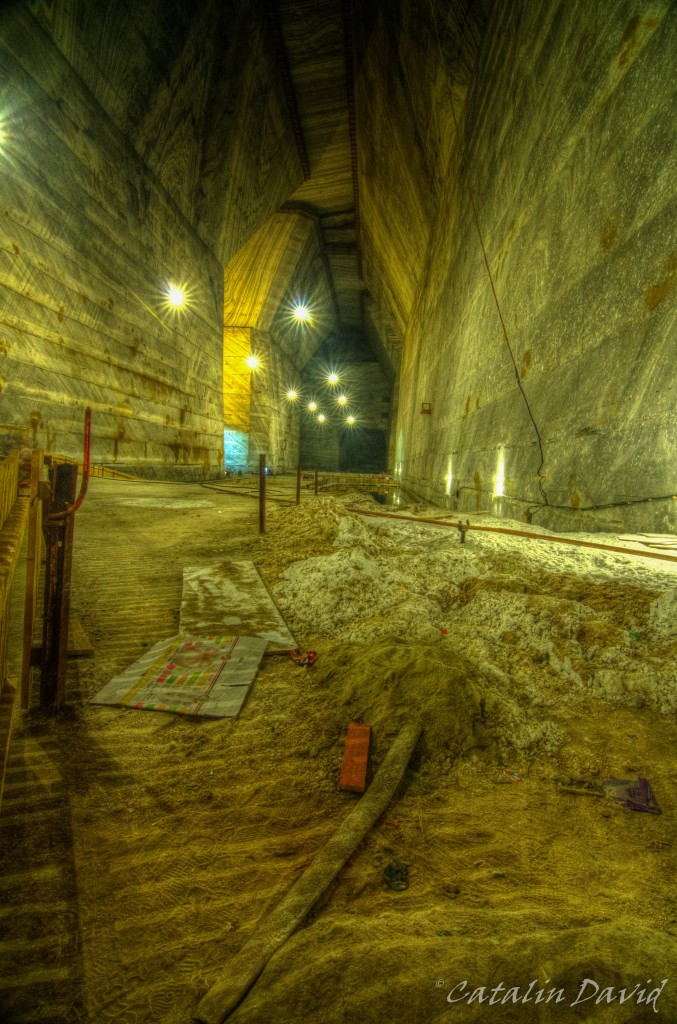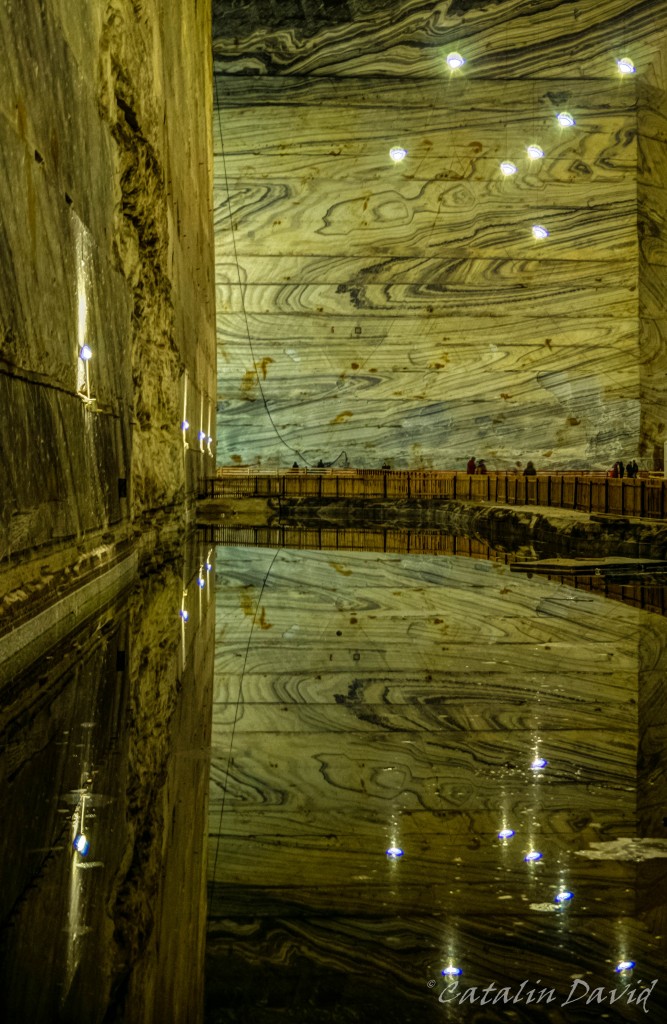Slanic, Prahova, Romania

I know it’s been a while, but here we go again… I am taking a break from the last summer story for some sort of “Breaking news”. I have just visited a salt mine close to Bucharest: Slanic Salt Mine.
Buried a bit more than 200m into the ground, the salt mine makes up for a cool nuclear apocalypse hiding place, especially since it’s accessible by car from Bucharest in less than 2 hours. The salt mine has not actually been a salt mine any more for 43 years. The salt mine named Unirea (Unification) has been in full use between 1938 and 1970. The salt mining was done in a top-down manner, starting at about 170m from ground level and then the mining kept slicing the ground underneath (2.2m tall slices). In 1970, the (pure) salt ran out, so the mine was converted in a touristic attraction.
The first impression once you get there, past the usually long queue on the weekends, is the elevator. The elevator was built around 1970 and it’s the only way to get in and out of the mine (at least that is what the posters say). There are more exits from the mine through which the salt was being carried to the surface, but those are now locked and in a very bad state. Back to the elevator, based on my experience with it, it’s the kind of place where you can expect a screw to malfunction and take your life. The descent to the bottom of the mine (205 meters) takes about 90 seconds and on the way to the bottom, there are 2 exits from the elevator shaft (besides top and bottom): 1) there is a hall where there is no air draft. This hall is used for international contests of Indoor Model Aircraft Flying and is not accessible to the public. 2) the other exit is at the top of the halls that tourists can visit. This is used by the employees to check if there are any leaks or dangers of the ceiling falling on tourists (shit happens!). This is also not accessible to the public.
Once inside, everything is different. You are 205 meters under ground in a hall that is 50 meters high. Needless to say you feel tiny and the view is breathtaking. For the breathtaking part, the “weather” doesn’t help either. Regardless of the conditions outside, the temperature in the mine is constant at 12C (50-55F) and the air pressure also stable at 730mm Hg. The humidity in the air is the only one affected by the outside world, with it being usually 10% less than outside.
So what madness drives people here? Not much, just the ability to stay in a salt-concentrated environment and breathe that air. The salt in the air is a natural remedy for some respiratory problems and there are people that actually come and sleep here during the day. What else besides sleeping? Walking for one – it takes about 30 – 45 minutes to do a roundtrip of the mine, but they have some extra activities. There are some bikes, basketball hoops, a small football court, table tennis tables and, of course, many walls against which you can train in tennis, volleyball etc.
There are a couple of lakes inside produced by infiltrated water, but not deep enough to feature gondola rides. In general, people come here for the experience of being in a salt mine and for the clean, salty air.
If you are a visitor, worth noting are some salt sculptures of Decebalus (picture below), a king of Dacians who fought the Roman Empire, and Trajan (who also has a sculpture in the mine), emperor of Romans who fought against Decebalus. Just nearby is the sculpture of Mihai Eminescu, one of the top Romanian writers.
Once you’re done taking salt air into your lungs, it’s time queue again for the elevator up (times for the elevator are every day except Monday 9AM – 3:45PM). If you are around, make sure you visit what’s left of the Salt Mountain and (what’s left of) Bride’s Cave, both in the city of Slanic.
Over and out,
/cd
Leave a Reply
You must be logged in to post a comment.




There are no comments